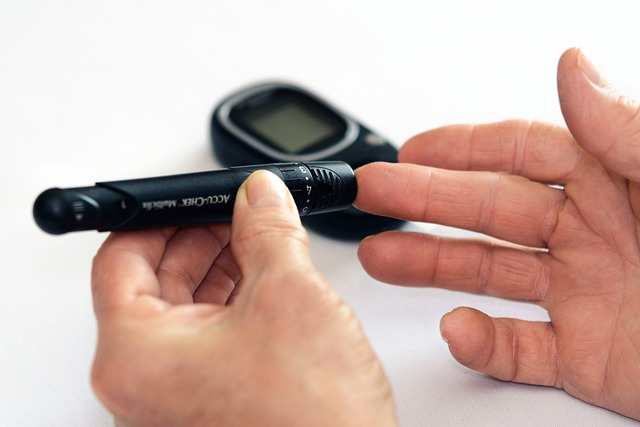Iron deficiency anemia, a common blood disorder diagnosed through UK standard liver blood tests (FBC), is characterized by low hemoglobin levels and red blood cell counts. Symptoms include fatigue, weakness, pale skin, and shortness of breath. The FBC test evaluates key health indicators like hemoglobin, iron levels, haematocrit, and RBC count to diagnose anemia, which can be confirmed with additional tests if necessary. Accurate interpretation of these results is crucial for tailored treatment recommendations.
“Iron deficiency anemia, a common yet often overlooked health issue, can be effectively diagnosed and managed through blood tests. Understanding this condition and its symptoms is crucial for timely intervention. In the UK, the standard liver blood test plays a pivotal role in screening for iron deficiency anemia. This comprehensive guide delves into the process, interpreting results, and provides insights based on the UK Standard Liver Blood Test, enabling individuals to recognize and address potential deficiencies.”
- Understanding Iron Deficiency Anemia and its Symptoms
- The UK Standard Liver Blood Test: What to Expect
- Interpreting Results: Diagnosing Iron Deficiency Anemia with Blood Tests
Understanding Iron Deficiency Anemia and its Symptoms
Iron deficiency anemia is a common blood disorder where the body lacks enough healthy red blood cells to carry adequate oxygen to the body’s tissues. This condition arises when there’s insufficient iron, an essential mineral that plays a vital role in producing hemoglobin, the protein responsible for giving red blood cells their vibrant red color and enabling them to transport oxygen. Symptoms of iron deficiency anemia can vary from mild to severe, often including fatigue, weakness, pale skin, shortness of breath, dizziness, and headaches. In some cases, individuals may also experience cold hands and feet or an increased risk of infections.
In the UK, a standard liver blood test (also known as a full blood count or FBC) is one of the primary tools used to diagnose iron deficiency anemia. This test measures various components of your blood, including red blood cells, white blood cells, and platelets, providing valuable insights into potential health issues. During the evaluation, healthcare professionals look for low levels of hemoglobin, which can indicate iron deficiency. If you’re experiencing any concerning symptoms or have risk factors for anemia, consulting a healthcare provider is essential for accurate diagnosis and appropriate treatment options.
The UK Standard Liver Blood Test: What to Expect
In the UK, one common diagnostic tool for evaluating anaemia and iron deficiency is the UK Standard Liver Blood Test. This test goes beyond assessing liver function and provides valuable insights into overall health, including potential red blood cell abnormalities. During this procedure, a healthcare professional will take a small sample of your blood, usually from a vein in your arm, using a needle. The sample is then analysed for various parameters.
Key components of the UK Standard Liver Blood Test include measuring haemoglobin levels, which indicate the capacity of red blood cells to carry oxygen. Iron levels are also assessed as low iron can contribute to anaemia. Other parameters like haematocrit (the percentage of red blood cells in your blood) and red blood cell count offer further information about the presence and severity of anaemia, helping healthcare professionals make accurate diagnoses and recommend appropriate treatment.
Interpreting Results: Diagnosing Iron Deficiency Anemia with Blood Tests
Interpreting your blood test results is a crucial step in diagnosing iron deficiency anemia. The UK Standard Liver Blood Test, which includes measures of hemoglobin (Hb), red blood cells (RBCs), and ferritin levels, plays a key role here. Hemoglobin, found in red blood cells, carries oxygen around the body; low Hb levels suggest anemia. Red blood cell count (RBC) can indicate how severe the anemia is, with lower numbers pointing to a more significant deficiency. Ferritin, a protein that stores iron, helps diagnose the underlying cause; low ferritin levels often point to iron deficiency.
If your test results show low hemoglobin, red blood cell count, or ferritin, it could indicate iron deficiency anemia. Your healthcare provider will consider these results in conjunction with your symptoms and medical history to make a diagnosis. They may recommend further tests to confirm the findings or rule out other potential causes of anemia.
Iron deficiency anemia is a common yet treatable condition, and the UK Standard Liver Blood Test plays a vital role in its diagnosis. By analyzing various blood components, this test helps healthcare professionals identify iron deficiency anemia and determine its severity. Understanding the results of such tests is crucial for effective management and treatment, ensuring folks can regain their energy and overall well-being.
